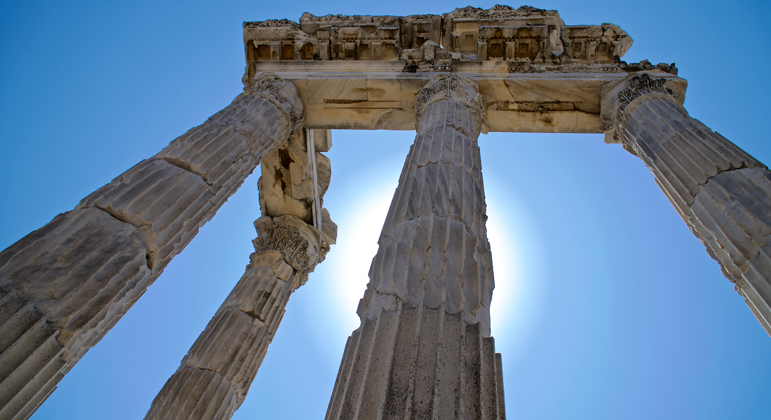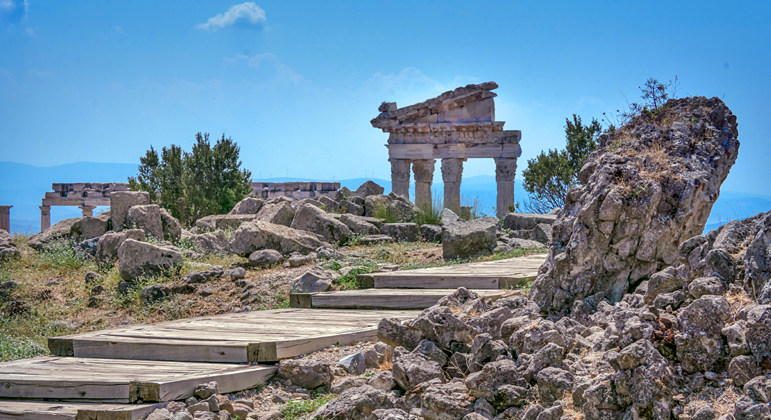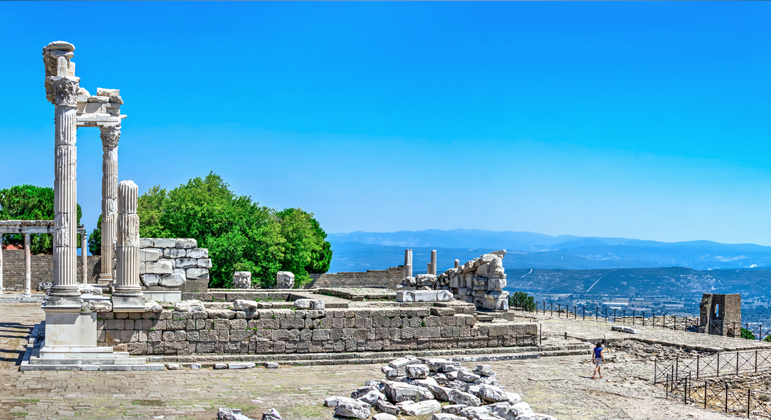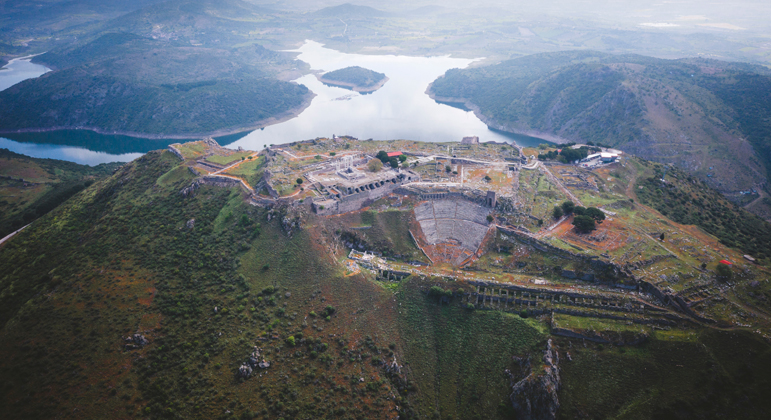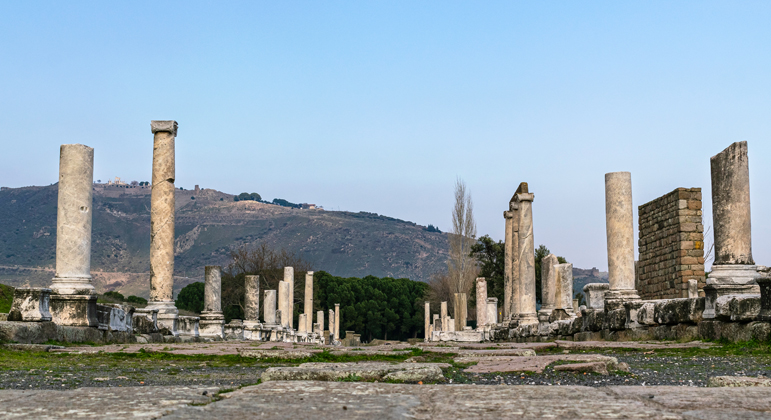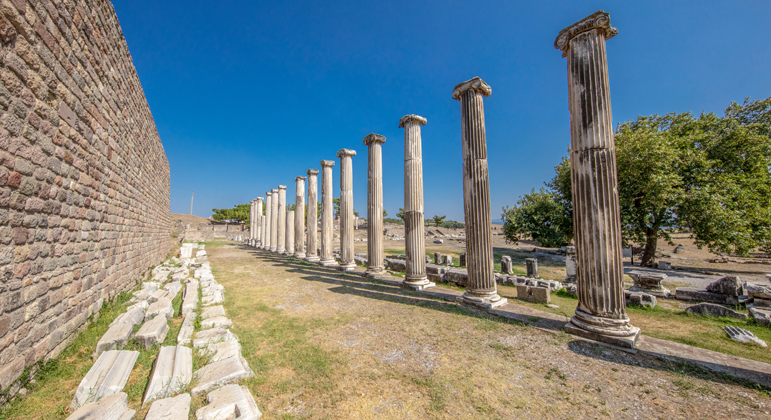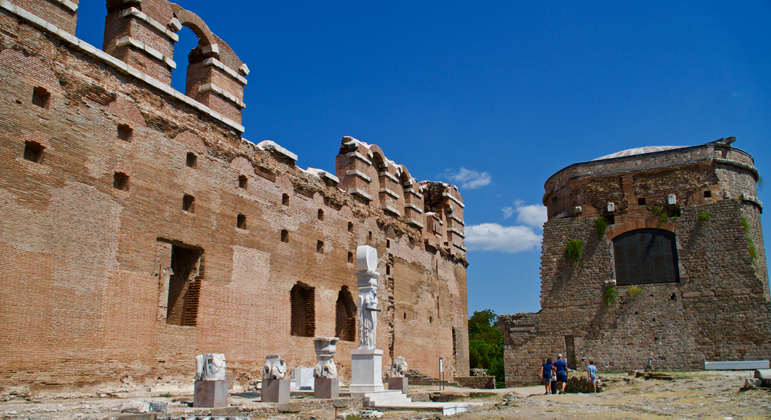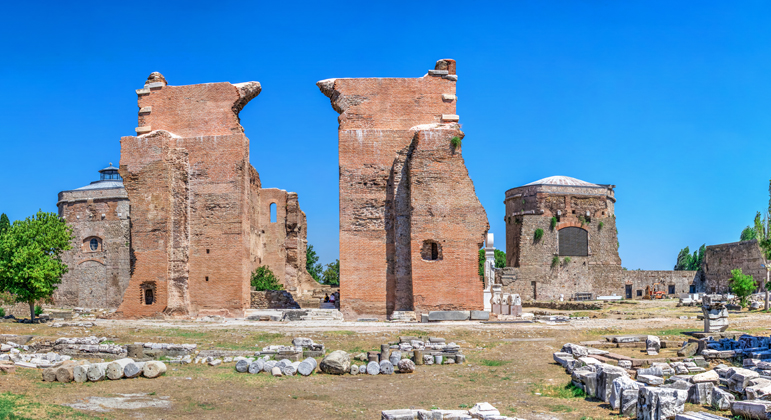The star attraction of the upper Acropolis of Pergamon (which was intended to rival the Acropolis of Athens) today is arguably the ancient Hellenistic theater, carved into the hillside and which at 36 meters high is the steepest theater of the ancient world: the commanding view from here must have stolen every show! It seated more than 10,000 people in 83 rows and if you look closely you can still see the post holes for the theater’s portable wooden set. On the north side of the Theatre Terrace are the ruins of the Temple of Dionysus, the god of wine and theatrical performances. The Temple of Athena is originally from the 4th century BC but it was modified by Eumenes II around 170BC. On a terrace below it stood the great Altar of Zeus, a monumental temple that took 20 years to build and could once be seen for miles around. The famous tall marble reliefs depicting an epic battle between the gods and giants have been dodging the Aegean sun in the confines of Berlin’s Pergamon Museum since the early 1900s, but you can still make out the impressive foundations of the horseshoe-shaped altar. Interestingly, when John the Apostle listed the Church of Pergamon as one of the Seven Churches of Revelation, he may have referred to the altar as the “throne of the devil” on account of its large size.
Elsewhere on the acropolis, you’ll find the Temple of Demeter, which was built by Philetaerus, the founder of the Attalid dynasty, and enlarged by Appolonia, the wife of Attalus II. Then there’s the large gymnasium area, on three terraces. The stairway that connects its lower level to the second is a remarkably well-preserved example of vault and arch construction. Ruins of the Sanctuary of Hera are here as well. The acropolis was mainly reserved for royalty, so it’s fascinating to walk the main street that connected the acropolis with the commercial part of the city, once lined with shops and warehouses. Notice the marks of chariot wheels in the marble pavements! The reconstructed Temple of Trajan, incidentally, is the only entirely ancient Roman ruin at Pergamon.

 Santorini
Santorini 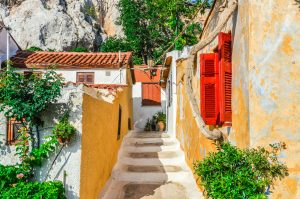 Athens
Athens  Patmos
Patmos  Istanbul
Istanbul 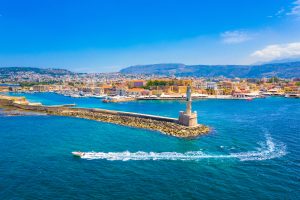 Crete
Crete 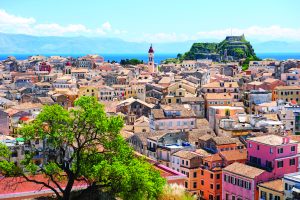 Corfu
Corfu 






 Deutschland (€)
Deutschland (€)
 Turkey (€)
Turkey (€)
